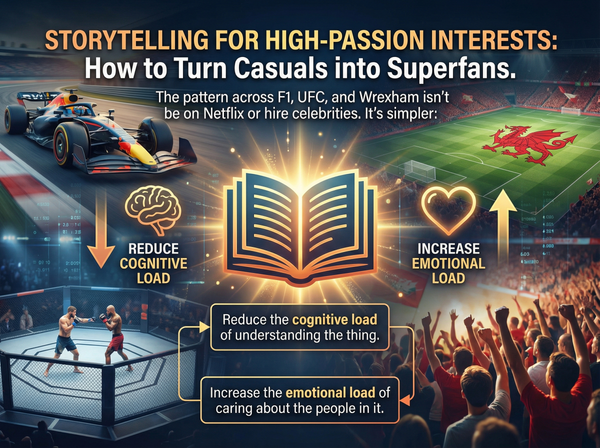Staying Connected: The Art of Client Follow-Up

Closing the deal is just the beginning. The real magic happens when you cultivate lasting relationships. But how do you stay top-of-mind without becoming a nuisance? It's all about strategic, value-driven follow-up that builds genuine connections and keeps clients coming back.
This comprehensive guide will equip you with the strategies, tools, and mindset to master the art of client follow-up, ensuring you're always seen as a trusted advisor, not just a salesperson.
The Power of Proactive Connection: Why It Matters More Than Ever
Regular, thoughtful outreach isn't just good manners; it's good business.
- Reinforces your value: It reminds them why they chose you in the first place.
- Builds trust and loyalty: It shows you genuinely care about their success beyond the initial sale.
- Identifies new opportunities: Regular check-ins can reveal evolving needs or challenges where you can offer further solutions.
- Generates referrals: Happy, engaged clients are your best advocates.
- Prevents churn: Addressing small issues proactively keeps clients satisfied.
Core Strategies: Mastering the Art of the Touchpoint
Forget the generic just checking in emails. Let's talk about building genuine connections that resonate.
1. The Value-Add Touchpoint
This is your most potent weapon. Every interaction should aim to provide value to the client, not just advance your agenda.
- Share Relevant Industry Insights: Did you read a groundbreaking article, see a relevant market trend, or listen to a podcast episode that directly impacts their business or industry? Send it their way with a brief, personalized note highlighting why you thought of them.
- Example: "Hi [Client Name], I just read this article on [Topic] and immediately thought of your recent challenge with [Specific Problem]. I found the insights on [Specific Solution] particularly relevant. Hope it's helpful!"
- Offer Helpful Resources: Perhaps it's a template, a comprehensive guide, a new tool, or an exclusive webinar you've developed that you genuinely believe would benefit them.
- Example: "Following up on our last conversation about [Challenge], I wanted to share this guide we put together on '5 Strategies for [Solving Challenge]'. I think you'll find the section on [Specific Strategy] particularly actionable."
- Provide a Targeted Update on Your Offerings: It's a heads-up if you've launched a new service, feature, or product that directly addresses a known need or could genuinely benefit them based on your understanding of their business.
- Example: "Just wanted to let you know we've rolled out a new feature, [Feature Name], that directly addresses the [Specific Pain Point] we discussed. It's designed to [Benefit 1] and [Benefit 2]. If you're curious, I'd be happy to give you a quick demo."
2. The Personal Touch
While Happy Thanksgiving is nice, it can feel impersonal. Elevate your personal touches to stand out.
- Acknowledge Milestones: Did their company announce a significant achievement, a new funding round, a major hire, or celebrate an anniversary? A quick, sincere congratulatory message goes a long way. Check their LinkedIn or company news feeds regularly.
- Example: "Saw the great news about [Client Company]'s expansion into [New Market]! That's fantastic. Congratulations to you and the team!"
- Reference a Past Conversation: This demonstrates active listening and attention to detail.
- Example: "Remember we talked about your love for [Hobby]? I saw this [Article/Event] about [Hobby] and immediately thought of you. Hope you're having a great week!"
- Example: "Following up on our chat about [Specific Challenge]. I recalled you mentioned [Specific Detail], and this new [Solution/Insight] might be exactly what you need."
- Lighthearted Check-ins: If you know them well, a brief, relevant comment about a shared interest (sports, local events, a piece of news) shows you see them as more than just a client.
When to use: Organically, when appropriate moments arise. These are less about scheduled intervals and more about genuine human connection.
3. The Educational Follow-Up (Post-Interaction)
After a meeting, call, or initial contact, your follow-up needs to reinforce your value proposition and move the conversation forward.
- Summarize Key Takeaways: Reiterate what you discussed, confirm your understanding of their needs, and clearly outline the problem you aim to solve. This shows attention to detail and aligns expectations.
- Example: "Great speaking with you today, [Client Name]. To recap, our main goals are to address [Problem 1] and [Problem 2], with the aim of achieving [Desired Outcome]."
- Provide Requested Information (and a Little More): If they asked for a spec sheet, send it promptly. But also include a relevant link to a case study, a testimonial, or an additional piece of content that further illustrates your value to a similar client.
- Example: "Here's the pricing sheet you requested for [Product/Service]. I also wanted to share this short case study on how [Similar Company] achieved a 20% efficiency gain using our solution – thought you might find it relevant to your goals."
- Suggest Clear Next Steps: Make it easy for them to say yes. Provide specific, low-commitment next actions.
When to use: Within 24 hours of any significant interaction. Promptness is key to maintaining momentum.- Example: "Based on our conversation, I'd suggest a 15-minute demo to walk through how [Your Solution] can address [Their Specific Need]. Would next Tuesday or Wednesday work for you?"
4. The Feedback Loop Check-in (For Existing Clients)
This is crucial for client retention and identifying upsell/cross-sell opportunities.
- Periodically Ask for Their Experience: "We're always looking to improve our service. How has [your product/service] been working for you lately? Are there any areas where we could provide more support?"
- Offer Proactive Support: Don't wait for them to come to you with problems.
- Example: "Just wanted to check in and see if you have any questions or need any assistance with [Your Product/Service]. We recently updated our knowledge base with new tutorials on [Specific Feature] that you might find useful."
- Celebrate Their Successes (Publicly/Privately): If they achieve something with your help, acknowledge it. This reinforces your partnership.
When to use: Quarterly for active clients, or after a specific project completion. Tailor the frequency to the client's needs and the nature of your service.- Example: "Congratulations on hitting your [Goal] this quarter! It's fantastic to see how [Your Product/Service] is helping you achieve those results."
Tools to Streamline Your Follow-Up
Don't rely solely on memory. Leverage technology to make your follow-up consistent and effective.
- Customer Relationship Management (CRM) System: This is non-negotiable. Use it to:
- Log every interaction (emails, calls, meetings).
- Set reminders for future follow-ups.
- Store important client details (birthdays, hobbies, key challenges).
- Segment your clients for targeted messaging.
- Email Marketing Platform (for broader updates): For sending newsletters, industry trend reports, or company news to segmented lists of clients. Ensure these are genuinely valuable, not just promotional.
- LinkedIn: An excellent platform for professional engagement.
- Connect with clients and prospects.
- Comment thoughtfully on their posts.
- Share relevant industry content.
- Calendar Tools with Reminders: Essential for scheduling specific follow-up actions.
- Note-Taking Apps: Keep detailed notes during conversations to refer back to for personalized follow-ups.
- Examples: Evernote, OneNote, Notion.
Common Follow-Up Pitfalls to Avoid
Even with the best intentions, follow-up can go wrong. Be mindful of these common mistakes:
- Being Too Salesy: Every touchpoint shouldn't be a direct ask. Focus on building rapport and providing value.
- Lack of Personalization: Mass emails or generic messages scream "I don't know or care about you."
- Inconsistency: Sporadic outreach is less effective than a consistent, thoughtful rhythm.
- No Clear Call to Action (When Appropriate): If you do want them to take an action, make it crystal clear and easy.
- Becoming a Stalker: There's a fine line between persistent and annoying. If they're not responding, re-evaluate your approach or the value you're offering.
- Forgetting Previous Interactions: This is where a good CRM is invaluable. Don't ask questions you've already answered or discuss topics you've already covered.
- Over-Automating: While tools are helpful, pure automation without human oversight can feel cold and impersonal.
Building Your Follow-Up Cadence
Your follow-up strategy should be dynamic, but here's a general framework you can adapt:
- Initial Prospecting:
- Day 1: Initial contact (email/call).
- Day 3-5: Value-add follow-up (relevant article, resource).
- Day 7-10: Reiterate unique selling proposition, suggest meeting.
- Day 14-21: Final value-add, open for future contact.
- After a Meeting/Demo:
- Within 24 hours: Detailed recap email with clear next steps.
- Day 3-5: Check-in on questions, offer additional resources.
- Day 7-10: Gentle nudge if no response, suggest alternative next steps.
- For Existing Clients:
- Monthly/Bi-monthly: Value-add check-in (industry news, new feature update).
- Quarterly: Proactive support call/email, feedback request, ensure satisfaction.
- Annually (or based on contract): Renewal discussion, value review.
- Ad-hoc: Personal touches, milestone acknowledgements.
The Human Element
Ultimately, the most effective follow-up strategies are rooted in genuine human connection. Your clients are people with goals, challenges, and busy schedules.
Approach every interaction with empathy, a desire to help, and a focus on building a long-term relationship.
By consistently providing value, demonstrating you care, and being strategic in your outreach, you'll become a valuable partner to your clients.
Keep Crushing!
- Sales Guy


